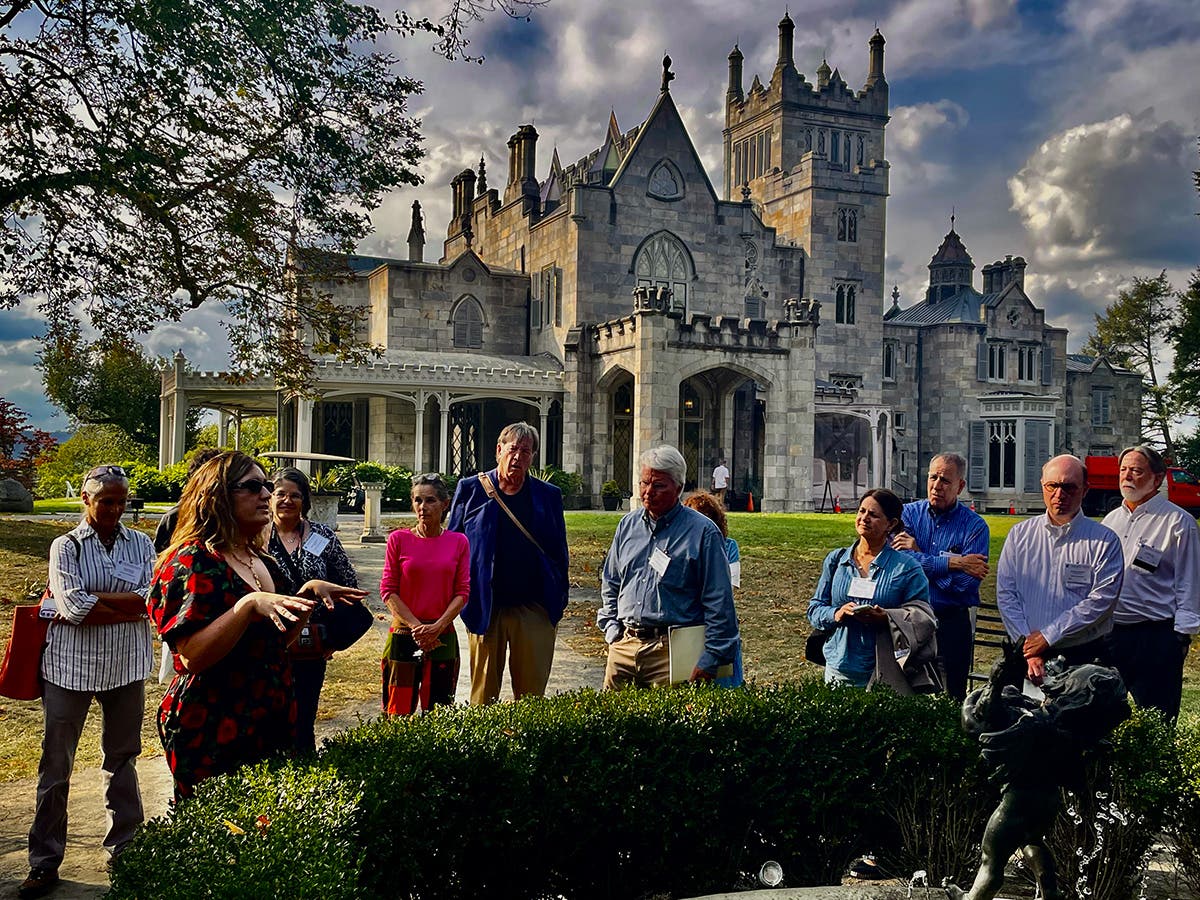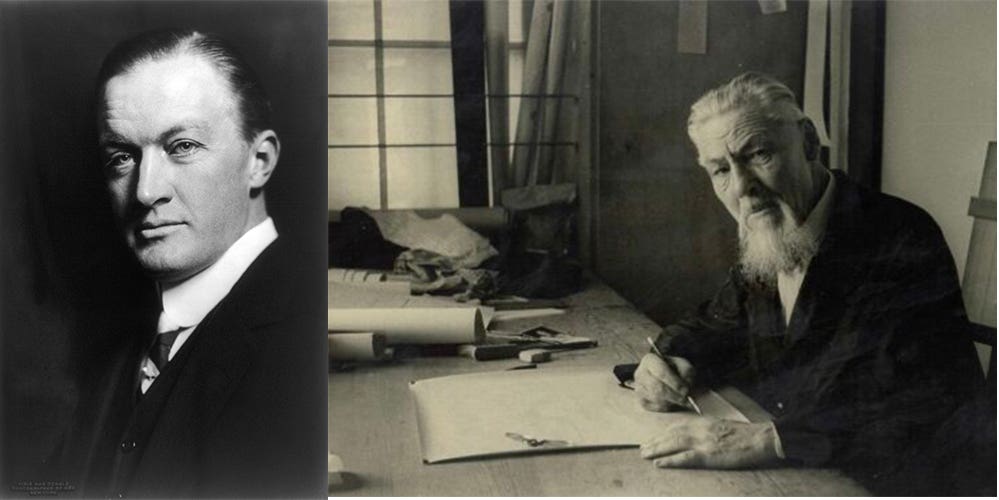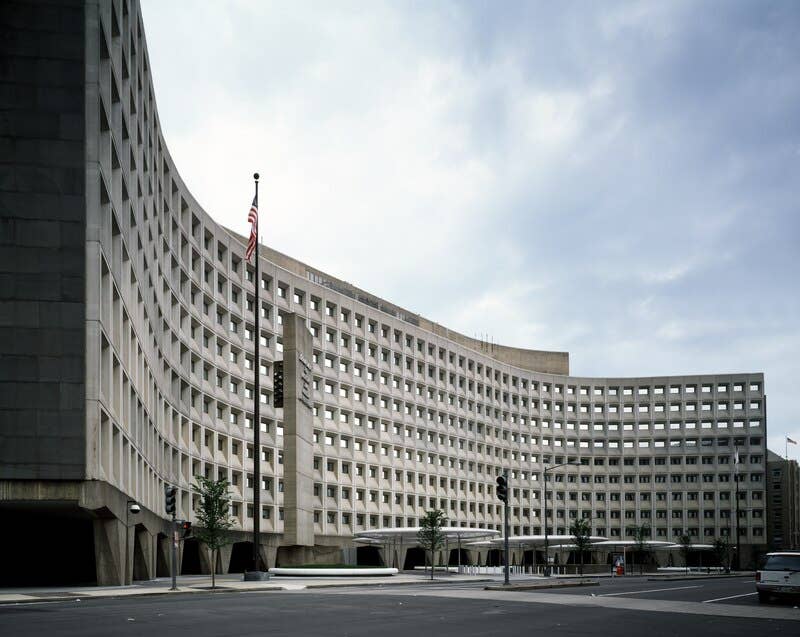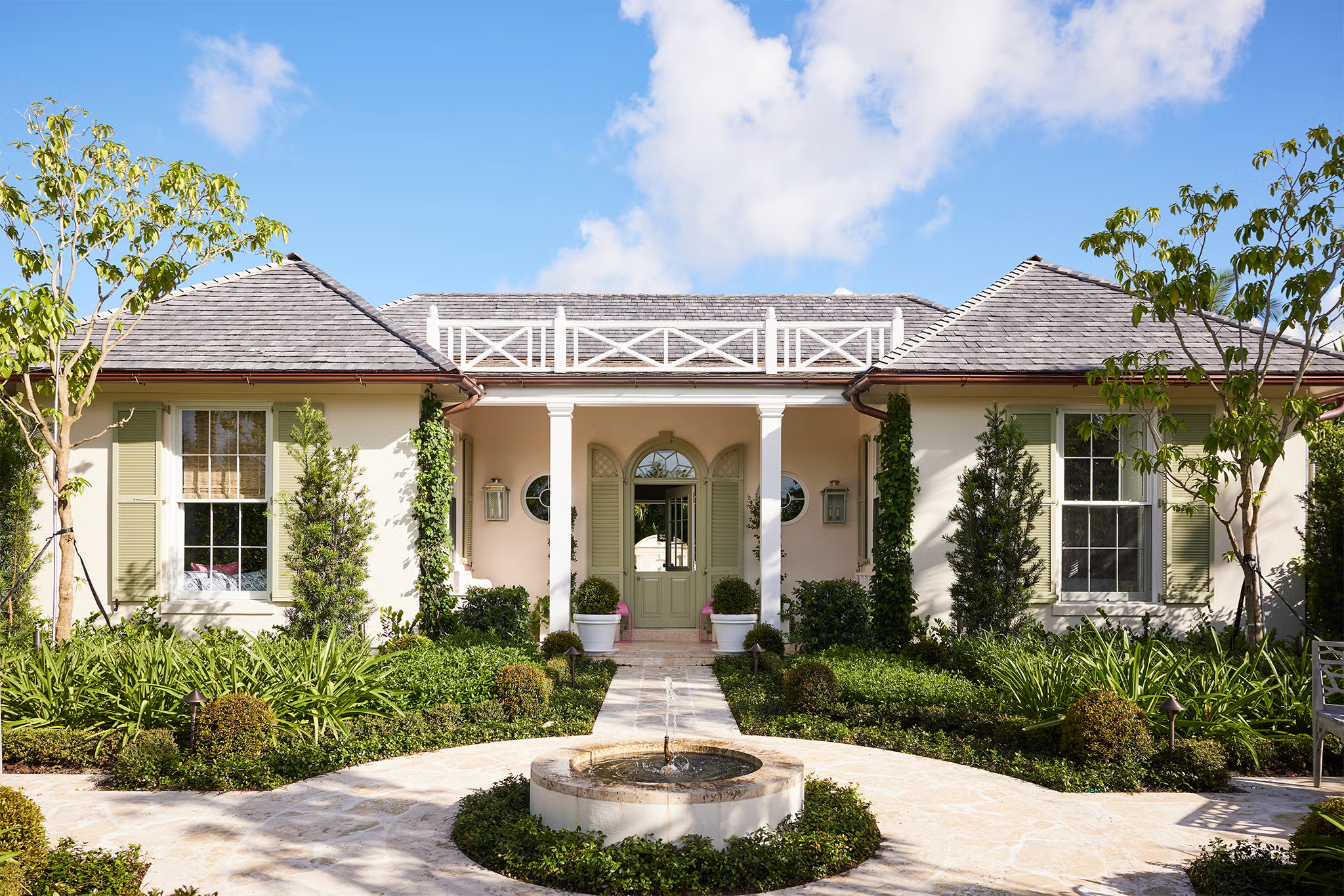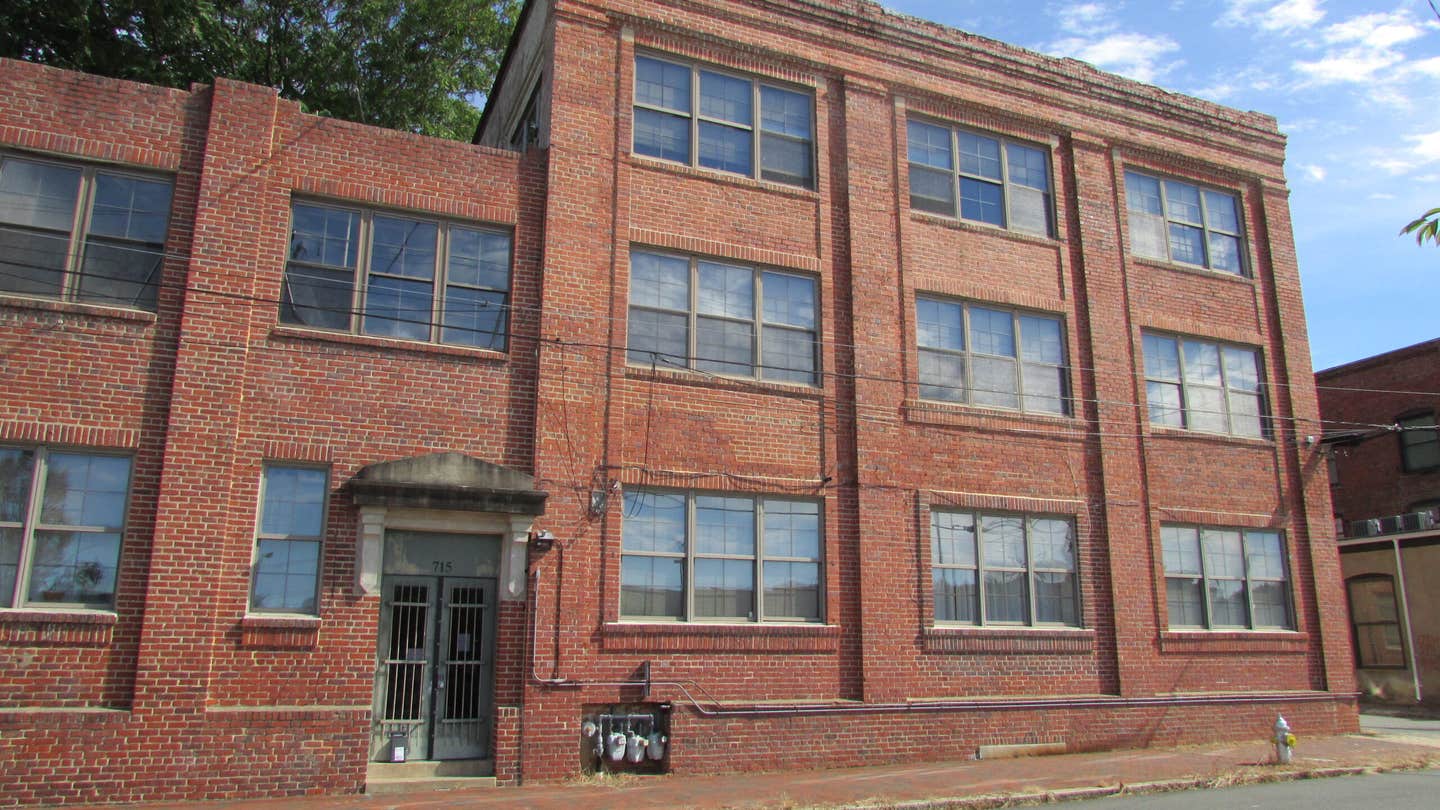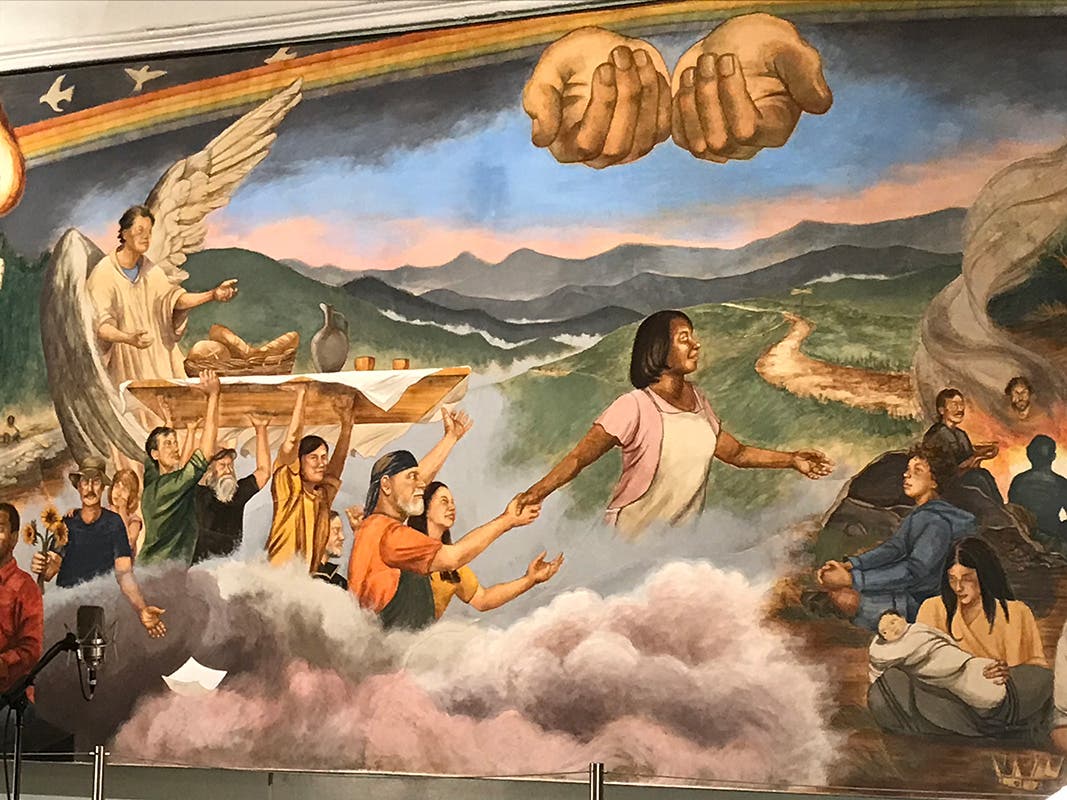
Peter Miller
Christmas with the Haywood Street Fresco
It’s hard to get in the Christmas spirit when life is so busy at the end of the year. But when something happens to remind me of the meaning of Christmas, I get that warm and grateful feeling, the gift of perspective.
My transformative moment happened this season when I saw the Haywood Street Fresco, in Asheville North Carolina. The benefit which unveiled this plaster and pigment mural, painted by Christopher Holt, was accompanied by music played by the Steep Canyon Rangers. This was the fresco’s debut, just in time for Christmas.
The Haywood Street Fresco resides in a Central Methodist Church, a sturdy brick building downtown which looks west at the Blue Ridge Mountains. It is twenty-eight-foot-wide by eleven feet tall covering the entire central wall of the sanctuary. Most of the people in the painting are local to the neighborhood. And they are homeless. The church and the Fresco’s message to them is, “you matter.” This Fresco seeks to “affirm sacred worth, restore human dignity and sabotage the shame of poverty.”
Haywood Street’s pastor, Brian Combs reminds us that the poor, the homeless, the people not like us, “could be all of us.” The Fresco gives these people a voice. Poverty makes them invisible, the Fresco makes them immortal. Lead by Christopher Holt, the Fresco was painted by a team of artists who created a community around their work. And the Haywood Street Welcome Table provides a place where people who would not normally come together, break bread together.
At the music celebration of the Fresco, we tapped our feet and clapped our hands together, too. With a guitar, a banjo, a mandolin, a fiddle and a bass the Steep Canyon Rangers harmony embodied the spirit of Haywood Street Church, the Fresco, and Christmas.
Peter H. Miller, Hon. AIA, is the publisher and President of TRADITIONAL BUILDING, PERIOD HOMES and the Traditional Building Conference Series, and podcast host for Building Tradition, Active Interest Media's business to business media platform. AIM also publishes OLD HOUSE JOURNAL; NEW OLD HOUSE; FINE HOMEBUILDING; ARTS and CRAFTS HOMES; TIMBER HOME LIVING; ARTISAN HOMES; FINE GARDENING and HORTICULTURE. The Home Group integrated media portfolio serves over 50 million architects, builders, craftspeople, interior designers, building owners, homeowners and home buyers.
Pete lives in a classic Sears house, a Craftsman-style Four Square built in 1924, which he has lovingly restored over a period of 30 years. Resting on a bluff near the Potomac River in Washington, D.C., just four miles from the White House, Pete’s home is part of the Palisades neighborhood, which used to be a summer retreat for the District’s over-heated denizens.
Before joining Active Interest Media (AIM), Pete co-founded Restore Media in 2000 which was sold to AIM in 2012. Before this, Pete spent 17 years at trade publishing giant Hanley Wood, where he helped launch the Remodeling Show, the first trade conference and exhibition aimed at the business needs and interests of professional remodeling contractors. He was also publisher of Hanley Wood’s Remodeling, Custom Home, and Kitchen and Bath Showroom magazines and was the creator of Remodeling’s Big 50 Conference (now called the Leadership Conference).
Pete participates actively with the American Institute of Architects’ Historic Resources Committee and also serves as President of the Washington Mid Atlantic Chapter of the Institute of Classical Architecture & Art. He is a long-time member of the National Trust for Historic Preservation and an enthusiastic advocate for urbanism, the revitalization of historic neighborhoods and the benefits of sustainability, including the adaptive reuse of historic buildings.




